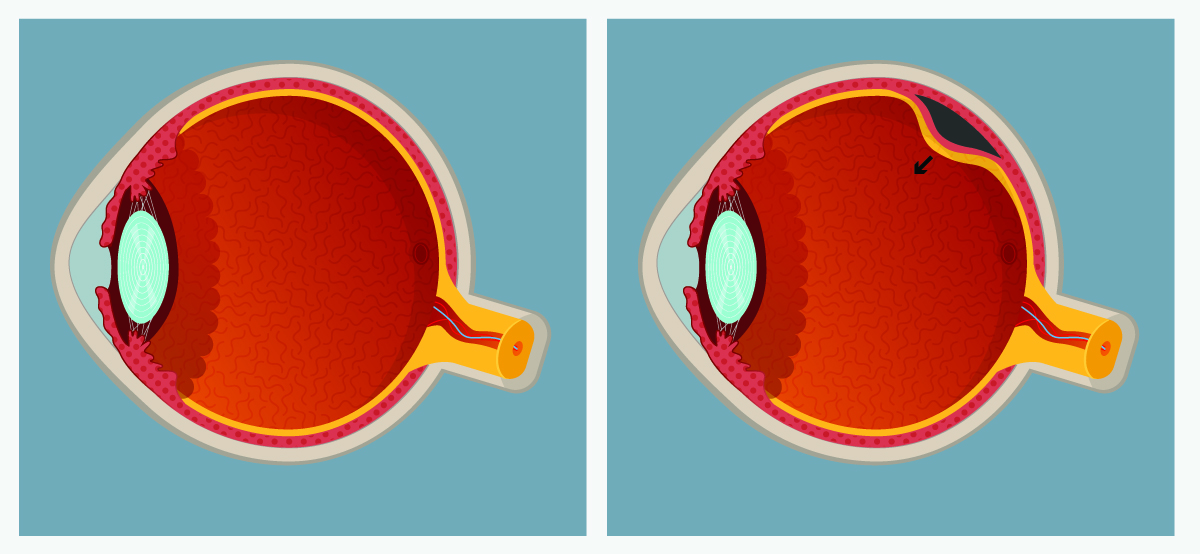What to Expect During Recovery After a Retinal Detachment or Tear
Submitted by Elman Retina Group on September 22, 2022

The retina is a thin layer of light-sensitive tissue located at the back of the eye. A retinal tear, as its name suggests, is a small tear in the retinal tissue. Retinal detachment occurs when the retinal tissue completely disconnects from the back of the eye. Retinal detachment is a medical emergency that can lead to irreversible vision loss if not treated immediately.
If you are recovering from a retinal detachment or tear, Elman Retina Group’s Dr. Michael Elman, Dr. Sidney “Sid” Schechet and Dr. David Dao are here to help. Below our doctors discuss what to expect during recovery after a retinal detachment or tear.
What To Expect During Recovery After Repair of a Retinal Detachment
Retinal detachment is a serious condition that requires surgery. If you have undergone retinal detachment surgery, you are most likely going to have to remain in a facedown position for a week (+/- a few days) while your retina heals. It is very important that you keep your head in a facedown position until your doctor says otherwise.
The facedown position is often the biggest challenge that patients report during recovery from retinal detachment repair. However, the facedown position is crucial to healing.
The best way to ensure a smooth recovery in the facedown position is to set yourself up for success. You can make yourself comfortable by renting or purchasing equipment like a facedown chair to help with your recovery. You may also want to store important items on the floor for easier access. The fantastic surgical coordinator team at Elman Retina Group also helps coordinate this.
Once your face-down time is up, you will still need additional healing time. Plan to limit your daily activities and give yourself plenty of time to recover. Until the bubble fully resolves, please remember not to travel on planes or drive through mountains due to bubbles expanding with elevations over 2,000 feet.
What To Expect During Recovery After Repair of a Retinal Tear
A majority of retinal tears require some form of treatment such as a laser procedure or cryopexy, and for the vast majority of cases, this can be done easily in the clinic as opposed to the operating room. Our doctors take time to meet with patients so they understand what to expect during the procedure and afterwards. You should always follow the advice of your physician.
Recovery after a retinal tear is nothing like the recovery after retinal detachment surgery and much easier! For the most part, patients are even able to drive and work after laser treatment for a retinal tear, and there is no bubble needed (unlike in retinal detachment repairs). The eye will be dilated and it’s possible to have a mild headache afterwards. Issues like light flashes or floaters may take longer to resolve on their own.
Depending on the procedure, you may have to use eye drops or wear a patch for a period of time. It is normal to experience some discomfort in the treated eye. In some instances, blurred vision, mild swelling and/or eye redness may occur. You should discuss these symptoms with your doctor in case they are signs of a more serious issue.
While every retinal tear is different and requires different types of recovery, you generally should plan on refraining from rigorous and strenuous activities so your eye has time to heal. You may need to refrain from strenuous activity for up to a month in extreme/severe circumstances. Be patient with the recovery and do not expect to return to your normal activities until you are fully healed.
Contact Elman Retina Group
Our doctors at Elman Retina Group are here to help you through your entire recovery process. If you have undergone retinal surgery and would like additional recovery tips, contact us today by calling or emailing our office.



